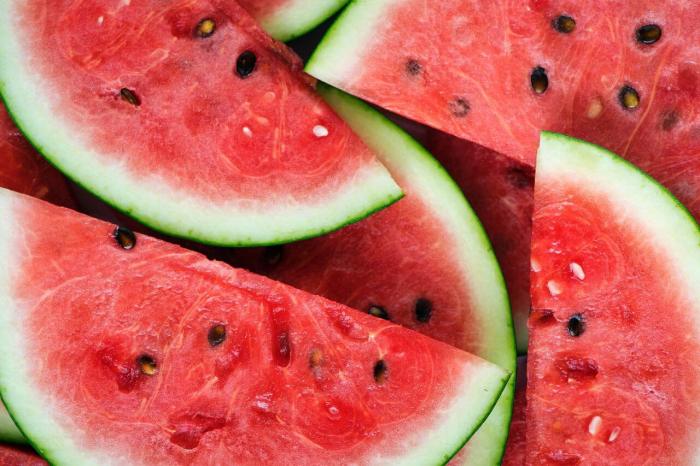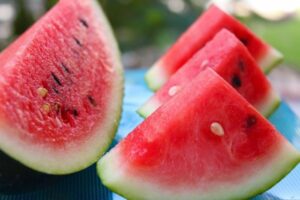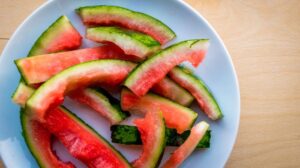Watermelons, with their refreshing taste and juicy flesh, are a summertime staple. But how long do watermelons last? Understanding the factors that affect their shelf life and implementing proper storage techniques is crucial to enjoy these delicious fruits at their peak.
This comprehensive guide delves into the optimal storage conditions, shelf life variations, and telltale signs of spoilage. We also provide practical tips and techniques for extending the shelf life of your watermelons, ensuring you can savor their sweetness for as long as possible.
Storage Conditions

Optimal storage conditions are crucial for preserving the freshness and extending the shelf life of watermelons. These conditions include maintaining the appropriate temperature range, humidity levels, and lighting conditions.
Watermelons thrive in temperatures between 50-60°F (10-15°C). Exposure to temperatures below 50°F (10°C) can cause chilling injury, leading to a loss of flavor and texture. Conversely, temperatures above 60°F (15°C) can accelerate ripening and spoilage.
Humidity
Watermelons prefer high humidity levels of around 85-95%. Maintaining these levels helps prevent dehydration and shriveling, preserving the fruit’s freshness and juiciness. Low humidity can cause watermelons to lose moisture, leading to a dry, mealy texture.
Lighting
Watermelons are sensitive to light and should be stored in dark, shaded areas. Exposure to direct sunlight can cause the rind to turn green and develop a bitter taste. Darkness slows down the ripening process, allowing watermelons to maintain their freshness for longer.
Shelf Life Variations
Watermelons’ shelf life varies significantly depending on several factors, including variety, maturity, and storage conditions. Understanding these factors helps maximize the freshness and longevity of your watermelons.
Variety
Different watermelon varieties possess inherent shelf life characteristics. Seedless watermelons generally have a longer shelf life compared to seeded varieties due to reduced moisture loss and fewer entry points for spoilage. Hybrid varieties, developed through selective breeding, often exhibit improved shelf life traits.
Maturity
Harvesting watermelons at the optimal maturity stage is crucial. Immature watermelons are more susceptible to decay and bruising, while overripe melons may have a shorter shelf life due to softening and increased susceptibility to pathogens.
Storage Conditions
Proper storage conditions significantly impact watermelon shelf life. Maintaining a temperature of 50-55°F (10-13°C) with high humidity levels helps slow down ripening and prevent dehydration. Adequate ventilation is also essential to prevent moisture accumulation and promote air circulation.
Signs of Spoilage: How Long Do Watermelons Last
Recognizing the telltale signs of a spoiled watermelon is crucial to ensure your safety and prevent foodborne illnesses. Several noticeable changes indicate that the fruit has deteriorated.
Appearance
A spoiled watermelon exhibits visible changes in its appearance. The rind may develop soft spots, bruises, or cracks. The once-glossy surface becomes dull and discolored, often with a yellow or orange hue. The flesh may also appear discolored, with brown or black spots or streaks.
Texture, How long do watermelons last
The texture of a spoiled watermelon undergoes significant changes. The flesh becomes mushy and soft, losing its firm and crisp texture. When you press on the rind, it may feel squishy or yield easily, indicating internal deterioration.
Smell
A spoiled watermelon emits an unpleasant odor. The once-sweet and refreshing scent gives way to a sour, fermented, or moldy smell. This odor is a clear indication that the fruit has gone bad and should be discarded.
Importance of Discarding Spoiled Watermelons
Consuming spoiled watermelons can lead to foodborne illnesses, causing symptoms such as nausea, vomiting, diarrhea, and abdominal pain. It is essential to discard any watermelon that exhibits signs of spoilage to avoid potential health risks.
Extending Shelf Life

Extending the shelf life of watermelons requires proper handling and storage techniques. By implementing simple practices, you can savor the freshness and flavor of your watermelons for a longer duration.
Watermelons are prone to deterioration, but with proper care, their shelf life can be significantly extended. Here are some practical tips to help you preserve the quality and freshness of your watermelons:
Proper Storage
- Choose a cool and dry place: Store watermelons in a well-ventilated area with temperatures ranging from 50 to 60 degrees Fahrenheit (10 to 15 degrees Celsius). Avoid placing them near heat sources or direct sunlight.
- Lay them on their side: Do not store watermelons upright, as this can cause bruising and uneven ripening. Place them on their side to distribute weight evenly and prevent flattening.
Refrigeration
- Refrigerate cut watermelons: Once cut, watermelons should be refrigerated immediately. Store them in an airtight container to prevent dehydration and contamination. They can last for up to 3-5 days in the refrigerator.
Airtight Containers
- Use airtight containers: For storing cut watermelons, use airtight containers to minimize exposure to air and prevent moisture loss. This will help maintain their freshness and prevent spoilage.
Table of Storage Recommendations
To help you preserve your watermelons for as long as possible, here’s a handy table with specific storage recommendations based on different watermelon varieties:
The optimal temperature for storing watermelons is between 50-55°F (10-13°C), with an ideal humidity level of 85-90%. However, different varieties may have slightly different storage requirements.
Variety-Specific Storage Recommendations
| Variety | Optimal Temperature | Ideal Humidity | Storage Duration |
|---|---|---|---|
| Seedless | 50-55°F (10-13°C) | 85-90% | 2-3 weeks |
| Seeded | 50-55°F (10-13°C) | 85-90% | 3-4 weeks |
| Sugar Baby | 45-50°F (7-10°C) | 85-90% | 1-2 weeks |
| Crimson Sweet | 50-55°F (10-13°C) | 85-90% | 3-4 weeks |
Conclusive Thoughts

By understanding how long watermelons last and following the storage recommendations Artikeld in this guide, you can minimize spoilage, reduce food waste, and enjoy the delectable taste of fresh watermelons throughout the season.
Expert Answers
Can I store watermelons in the refrigerator?
Yes, cut watermelons can be stored in the refrigerator for 3-5 days. Wrap the cut surface tightly with plastic wrap or store it in an airtight container to prevent dehydration.
How can I tell if a watermelon is spoiled?
Signs of spoilage include a dull appearance, soft or mushy texture, and a sour or fermented smell. Discard any watermelon that shows these signs to avoid foodborne illnesses.
What is the ideal storage temperature for watermelons?
Watermelons should be stored at temperatures between 50-60°F (10-15°C) with moderate humidity. Avoid storing them at temperatures below 45°F (7°C) as this can damage the fruit.







Leave a Comment